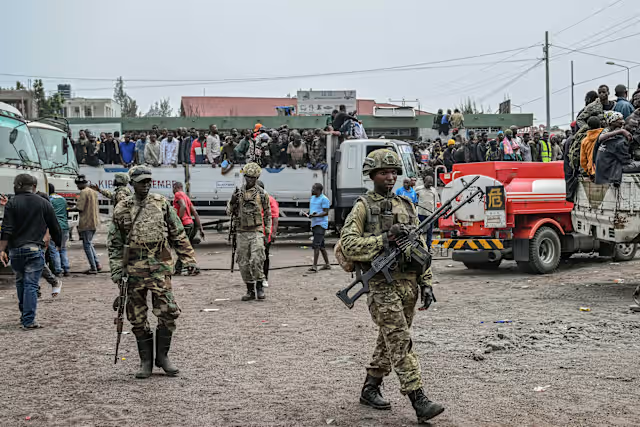News & Politics
Africa’s Economic Future Hangs In Balance As US Cuts $555M AfDB Fund
The Trump-led administration has unveiled plans to eliminate $555 million in funding for the African Development Bank’s (AfDB) primary aid vehicle, the African Development Fund (ADF), as part of sweeping reductions to foreign assistance. The proposed cuts, submitted to Congress on Friday, would terminate U.S. contributions to the ADF in 2025, dealing a significant blow […]
By
Alex Omenye
7 months ago
The Trump-led administration has unveiled plans to eliminate $555 million in funding for the African Development Bank’s (AfDB) primary aid vehicle, the African Development Fund (ADF), as part of sweeping reductions to foreign assistance.
The proposed cuts, submitted to Congress on Friday, would terminate U.S. contributions to the ADF in 2025, dealing a significant blow to low-income African nations reliant on the fund for critical infrastructure, healthcare, and climate resilience projects. The White House justified the move by stating that the ADF no longer aligned with U.S. priorities, signaling a broader shift toward bilateral aid mechanisms that prioritize American economic returns.
Established in 1972, the ADF provides concessional loans and grants to Africa’s poorest and most fragile economies, including Niger, Somalia, and South Sudan. The U.S., the fund’s second-largest donor since 1976, had pledged $555 million to its 2023–2025 cycle. This abrupt withdrawal creates a $1.7 billion shortfall in the AfDB’s $8.9 billion budget, complicating its push for a $25 billion replenishment by 2026. The Trump administration has emphasized redirecting resources to the World Bank’s International Development Association (IDA), with a $3.2 billion commitment over three years, and expanding the U.S. International Development Finance Corporation (DFC), which will launch a $3 billion fund targeting “strategic investments” with measurable returns for American taxpayers.
The ADF has financed transformative projects, such as Kenya’s Last Mile Electricity Initiative and Senegal’s agriculture programs. This halt in funding could delay similar initiatives, exacerbating energy deficits and food insecurity. Consequently, reduced support may weaken drought response in the Horn of Africa and flood mitigation in coastal nations like Mozambique. Countries emerging from conflict, such as Burkina Faso and Mali, rely on ADF grants for basic governance and security. Aid gaps could destabilize peacebuilding efforts.
The move has been criticized. Outgoing President Akinwumi Adesina warns that the cuts “undermine decades of progress,” urging donor nations to uphold commitments. His successor, to be elected this month, faces pressure to secure alternative funding. The African Union criticized the move as “short-sighted,” noting that 40% of ADF projects directly align with UN Sustainable Development Goals.
While the U.S. frames its pivot to the DFC and IDA as “burden-sharing,” critics highlight disparities. The DFC focuses on private-sector projects, such as ports and digital infrastructure, which often bypass rural communities. Meanwhile, the IDA’s $3.2 billion U.S. pledge falls short of the $4 billion proposed under Biden, raising concerns about diluted multilateral cooperation.
The funding cuts come as Africa grapples with the aftermath of foreign aid cuts from the United States. Work is already cut out for the AfDB’s incoming president as he must navigate a fractured donor landscape, potentially turning to Gulf states and private capital. For the U.S., the decision risks alienating African partners at a time of geopolitical competition, with countries increasingly diversifying their alliances to China and Russia.

